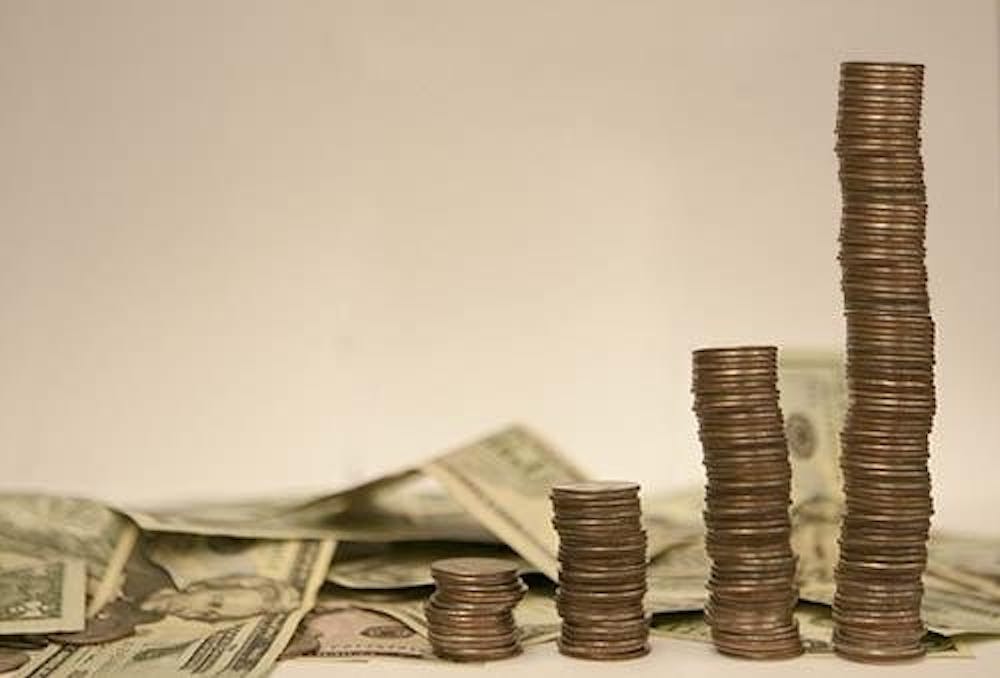Advice from Finance 101 Professor Dan Boylan on paying off loans:
- Pay off the loan with the highest interest rate first
- If paying off the highest interest rate is too intimidating, start with the smallest loan first.
- Take any extra money like tax refunds or bonuses and put it toward the loan.
- Pay more than minimum payment whenever possible.
Ball State graduates send Finance 101 Professor Dan Boylan emails every week about their student debt.
They are not sad emails about defaulted loans or postponed purchases, but rather, success stories.
The emails bring stories of former students who have already paid off student loans, and even mortgages, using the techniques Boylan teaches in Finance 101. And these students are recent grads because Boylan has only taught at Ball State for four years.
“It’s pretty freaking dynamite,” Boylan said. “If I don’t get a nice story like that every week, I am kind of surprised.”
Student loan debt may seem overwhelming on a grand scale. It totals $1.3 trillion — exceeding credit card debt in 2010, and auto loans in 2011. But for those graduating from a four-year school with a bachelor’s degree, student debt can be manageable and there are multiple approaches to paying it off, experts like Boylan say.
Ball State students graduate with less debt than national average
At Ball State, the average total debt is $25,000, according to data from the U.S. Department of Education’s College Scorecard, compared to the national average of around $30,000-$35,000.
Rob Wirt, associate director of financial aid at Ball State, said this is the situation for most graduates. He said 70 percent graduate from Ball State with some loans.
However, many students feel unprepared to deal with their loans. In the Money Matters on Campus 2016 report, EverFi, a student aid policy organization, surveyed 85,000 students from four-year schools on how they feel about their fiscal health and financial knowledge. Only about 10 percent of students surveyed felt they had enough information available to pay off their loans.
Ball State tries to mitigate the problem while students are in school by requiring a financial literacy class. Only 17 states require college students to take a financial literacy course before graduation, the report said. Indiana is not among those states.
Boylan said the most popular week of his class is the education funding weeks. He spends one week on school funding and another week on loans.
“People really pay attention,” Boylan said. "People are concerned. They aren’t worried concerned. They just don’t want to have [debt].”
Wirt said in the past 20 years he has worked in student aid, he has seen better information on financial aid and better access to it, along with increased efforts from financial aid offices, but hasn’t seen a difference in how much students or families understand.
“We seem to be [at] a tipping point where so much information is available in so many places that it can be overwhelming for families to try to sort it all out,” Wirt said.
Strategies for paying down debt
For students who graduate with the debt, there are a number of strategies to pay it off.
Students use two methods to attack student loans, Boylan said. The most financially sound method is to pay off the loans with the highest interest rates first. This approach is called “debt avalanche” by Student Loan Hero, a site that helps students with loans.
But Boylan said it might be too much for someone whose highest interest rate is also his or her largest loan. His other strategy is to start with the smallest loans, to build up confidence.
“If the first thing you are trying to bite is an entire elephant, you’re never going to swallow,” he said.
Take advantage of “invisible money,” Boylan said. Any unexpected windfall whether it is inheritance, a bonus or a tax refund can be used as extra to pay off the loan.
Paying more than the minimum payment and having it automatically deducted is another strategy, he said.
Ball State 2014 graduate Alayna Bridges made intentional decisions with her college loans. Her sophomore year, her support for paying for school fell through, so Bridges took out a loan and graduated early with a degree in general studies. She left with $5,000 in loans.
Out of school, her minimum payment was only $50 a month, but she paid $100 a month and paid out $2,000 in two years. At the same time, she worked full time and saved up to go back to school online for a degree in business administration.
Boylan said by choosing Ball State, most students have already shown they are financially savvy because they chose an accredited school with a relatively low price tag. He thinks Ball State grads are in the ideal situation to knock off their debt.
“There are students who learn in class how to [manage debt] and they are going to have a lot less stress, and there are students who are going to have to learn the hard way,” he said. “They will have to land on their feet. It’s not going to be stress free, but they are still going to figure it out. It’s not like you are building a rocket ship.”





